How to Use Wallets for Crypto-Backed Loans
In today's fast-paced financial landscape, the concept of leveraging digital assets for liquidity has taken the world by storm. Have you ever thought about how you can use your cryptocurrency without selling it? Well, that's where crypto-backed loans come into play. They allow you to unlock the value of your digital assets, providing you with cash flow while still holding onto your investments. In this article, we will explore how wallets play a crucial role in securing these loans, and we’ll guide you through the essentials of navigating this fascinating financial terrain.
Before diving into the nitty-gritty, let's clarify what we mean by crypto-backed loans. Essentially, these loans enable you to borrow funds by using your cryptocurrency as collateral. It's like putting your house up for a mortgage, but instead, you're using your Bitcoin, Ethereum, or any other digital currency you own. This method is incredibly appealing, especially in a market that can be as volatile as cryptocurrencies. You get to maintain ownership of your assets while gaining access to cash when you need it most.
But hold on a second! Before you rush into securing a loan, it's crucial to understand the types of wallets available for managing your crypto assets. The right wallet can make or break your experience in the world of crypto-backed loans. There are two main categories of wallets: hot wallets and cold wallets. Each has its unique set of features, benefits, and drawbacks that can significantly impact your loan process.
Crypto-backed loans are particularly attractive to individuals who want to avoid the tax implications or market risks associated with selling their digital assets. When you borrow against your crypto, you can use the funds for various purposes—be it investing in more crypto, paying off debts, or even funding a personal project. The beauty of this system lies in its flexibility; you can access liquidity without sacrificing your long-term investments.
When it comes to managing your cryptocurrency, the type of wallet you choose is paramount. A wallet isn't just a digital purse; it's a fortress for your assets. Depending on your needs—whether you prioritize accessibility, security, or a balance of both—your choice of wallet will be instrumental in the loan process.
Hot wallets are connected to the internet, making them incredibly convenient for quick transactions. They are perfect for those who need to access their funds frequently. However, this convenience comes at a cost; hot wallets are more susceptible to hacks and cyber threats. On the other hand, cold wallets, which store your assets offline, provide enhanced security but can be less user-friendly for immediate transactions. It's like choosing between a fast-food restaurant and a gourmet kitchen—both have their place, but your choice depends on your immediate needs.
Hot wallets offer several advantages:
- Quick Access: You can easily access your funds anytime.
- User-Friendly: Most hot wallets come with intuitive interfaces.
However, they also have drawbacks:
- Security Risks: Being online makes them vulnerable to hacking.
- Less Control: You might not have complete control over your private keys.
Cold wallets shine in terms of security:
- Enhanced Security: They are less likely to be targeted by hackers.
- Long-Term Storage: Ideal for holding assets you don't plan to trade frequently.
But they come with their own challenges:
- Accessibility: Accessing your funds can take more time.
- Complexity: Some cold wallets may require technical knowledge to operate.
When dealing with loans, ensuring the security of your crypto wallet is vital. Here are some best practices to safeguard your assets:
- Use Two-Factor Authentication: Always enable 2FA for an added layer of security.
- Keep Software Updated: Regularly update your wallet software to protect against vulnerabilities.
- Backup Your Wallet: Always have a backup of your wallet to prevent loss.
Now that we've covered wallets, let's talk about the loan application process. Applying for a crypto-backed loan involves several steps, starting with selecting a reputable lender. Make sure to do your homework and read reviews. Once you've chosen a lender, you'll need to submit your collateral, which is where your wallet comes into play.
Different lenders may have varying documentation requirements. Generally, you can expect to provide:
- Proof of Identity: A government-issued ID.
- Proof of Address: A utility bill or bank statement.
- Wallet Address: The address of the wallet holding your collateral.
After submitting your application, understanding the approval process is essential. Lenders typically assess your application based on the value of your collateral and your creditworthiness. Once approved, the timeline for disbursing funds can vary, but many lenders aim for quick turnaround times—sometimes as fast as 24 hours!
1. What is the maximum amount I can borrow?
The maximum loan amount usually depends on the value of your collateral and the lender's policies.
2. Are there any fees associated with crypto-backed loans?
Yes, most lenders charge fees, which can vary widely, so it's essential to read the fine print.
3. What happens if I can't repay the loan?
If you default on the loan, the lender can seize your collateral.
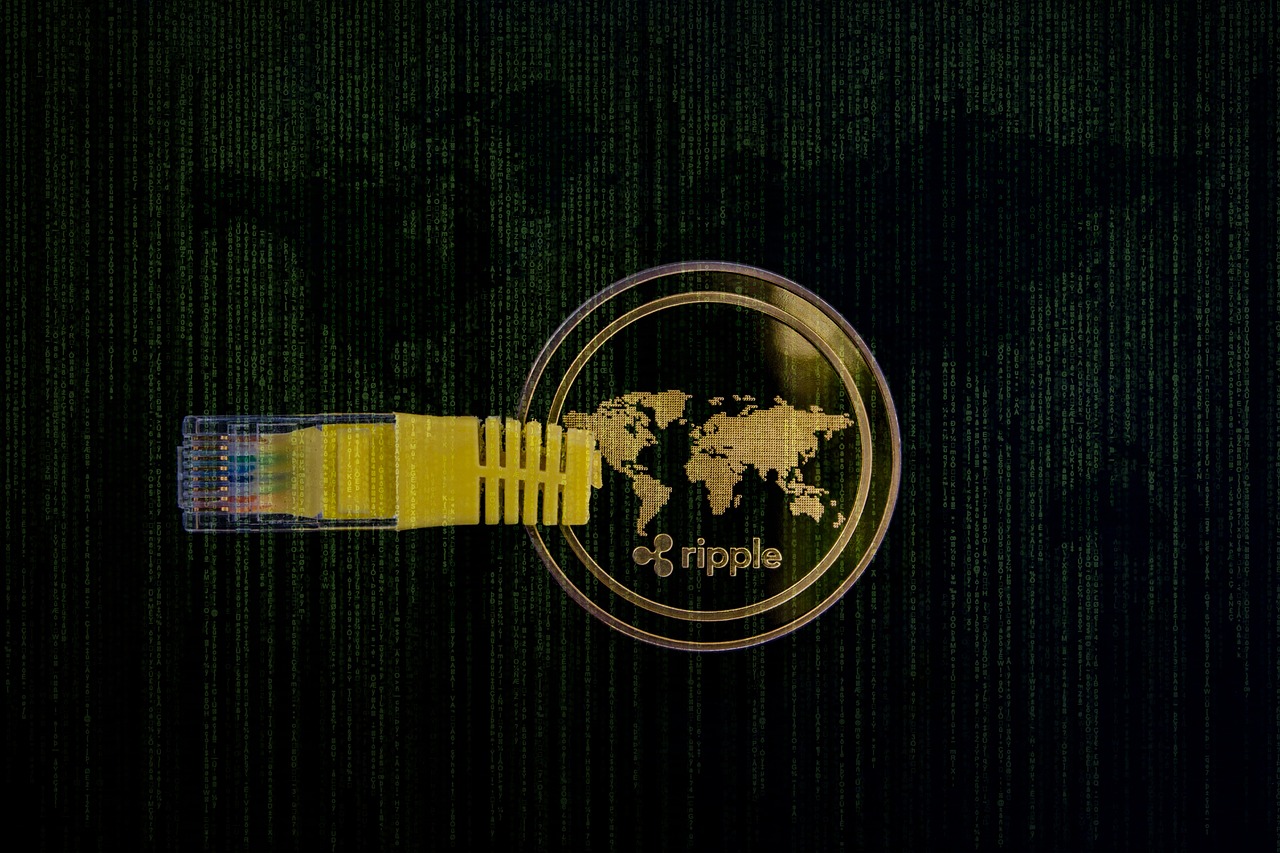
Understanding Crypto-Backed Loans
Imagine you have a treasure chest filled with digital gold—your cryptocurrency assets. Instead of selling this treasure to get cash when you need it, you can use it to secure a loan. This is the essence of crypto-backed loans. They allow you to leverage your digital assets to gain liquidity without the need to part ways with them. In a world where cryptocurrency has become a significant player in the financial arena, understanding how these loans work is crucial for anyone looking to maximize their investment potential.
So, how do these loans work? When you apply for a crypto-backed loan, you essentially pledge your cryptocurrency as collateral. The lender will assess the value of your assets and determine how much they are willing to lend you. Typically, you can borrow a percentage of the asset's value—often around 50-70%. This means you can access cash while still holding onto your crypto, allowing you to benefit from its potential appreciation over time.
One of the most appealing aspects of crypto-backed loans is their speed and efficiency. Traditional loans often involve lengthy approval processes, extensive paperwork, and credit checks. In contrast, crypto-backed loans can be processed quickly, sometimes within a matter of hours. This is particularly beneficial in the fast-paced world of cryptocurrency trading, where opportunities can come and go in the blink of an eye.
Another enticing factor is the flexibility these loans offer. You can use the funds for various purposes—whether it's investing in more cryptocurrencies, funding a personal project, or even paying off high-interest debts. The choice is yours! Plus, since you’re using your crypto as collateral rather than selling it, you can still take advantage of any potential price increases.
However, it’s essential to approach crypto-backed loans with caution. Like any financial product, they come with their own set of risks. If the value of your collateral drops significantly, you might face a margin call, meaning you’ll need to add more collateral or risk losing your assets. Understanding the market and having a clear repayment plan is vital to navigating these waters safely.
In summary, crypto-backed loans present a fascinating opportunity for those looking to unlock the value of their digital assets. They provide a unique blend of liquidity and investment potential, but they also require a thorough understanding of the risks involved. As the cryptocurrency landscape continues to evolve, being informed about these financial tools will empower you to make smarter decisions.
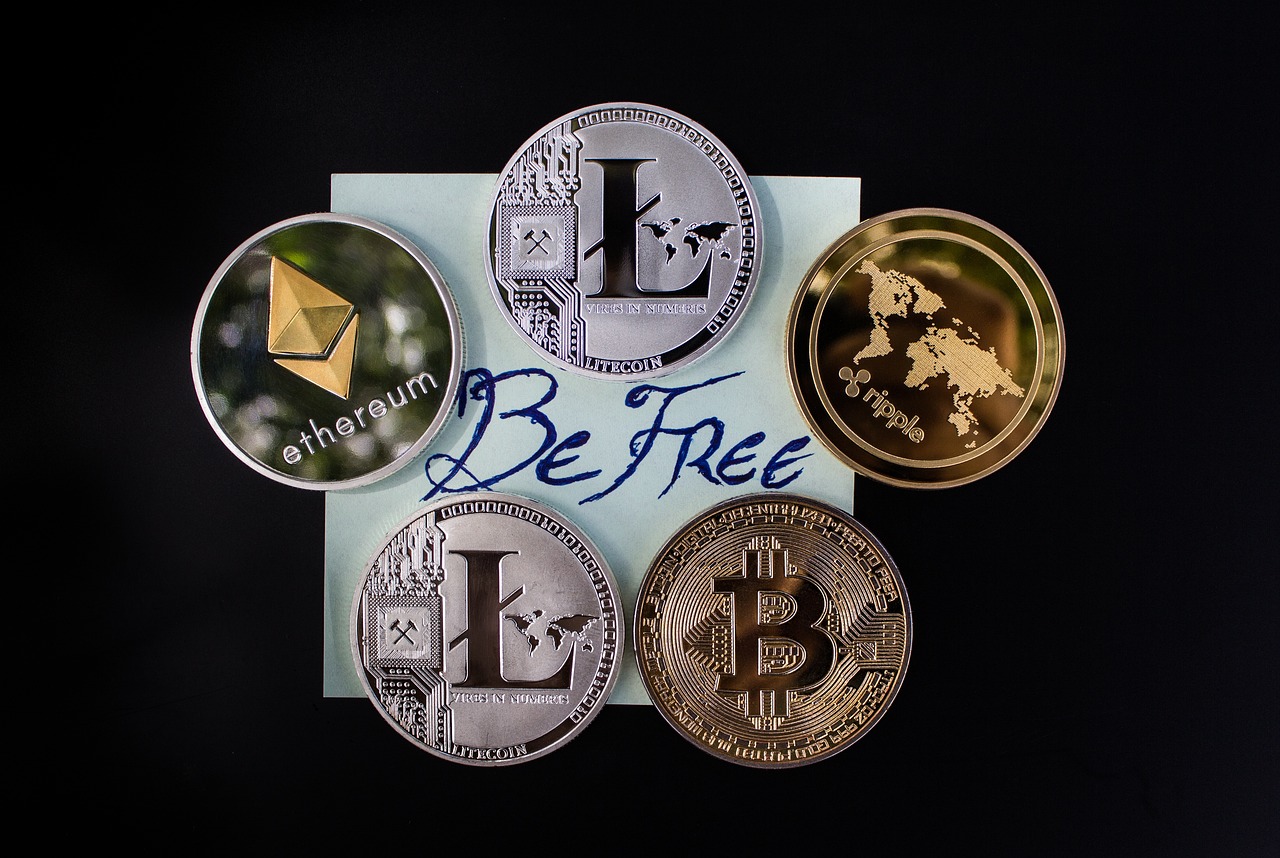
Choosing the Right Wallet
When diving into the world of crypto-backed loans, one of the most critical decisions you'll face is choosing the right wallet to manage your digital assets. A wallet isn't just a digital purse; it's your gateway to the cryptocurrency universe. Think of it as a safe deposit box where you store your valuables, but instead of gold or cash, you're securing digital currencies. The type of wallet you choose can significantly impact your ability to leverage your assets for loans, so let's break down the options available to you.
There are primarily two types of wallets: hot wallets and cold wallets. Each serves a unique purpose and offers different features. Hot wallets are like the bustling city streets—always connected, always ready for action. They're designed for quick transactions and easy access, making them ideal for day-to-day trading. On the other hand, cold wallets are your serene countryside—secure and isolated from the chaos of the internet. They provide enhanced security for long-term storage, perfect for those who want to safeguard their assets against potential cyber threats.
Before you make a choice, consider the following factors:
- Accessibility: How often will you need to access your funds? If you're a frequent trader, a hot wallet might be more suitable.
- Security: Are you holding a significant amount of cryptocurrency? If so, a cold wallet could provide peace of mind.
- Transaction Speed: Do you need to execute transactions quickly? Hot wallets typically allow for faster transactions.
- Fees: Different wallets may have varying fee structures. Be sure to check what costs might be associated with each option.
Now, let’s take a closer look at the pros and cons of both wallet types. Understanding these can help you make a more informed decision:
| Wallet Type | Pros | Cons |
|---|---|---|
| Hot Wallets |
|
|
| Cold Wallets |
|
|
Ultimately, the choice between a hot wallet and a cold wallet boils down to your personal needs and how you plan to interact with your crypto assets. If you're looking to engage in frequent trading and need immediate access to your funds, a hot wallet is likely the way to go. Conversely, if you're in it for the long haul and want to ensure your assets are safe from the prying eyes of hackers, a cold wallet is your best bet.
Remember, the world of cryptocurrencies can be as unpredictable as a rollercoaster ride—thrilling yet daunting. So, take your time, weigh your options, and choose a wallet that aligns with your financial goals and risk tolerance. After all, the right wallet can be the difference between a smooth ride and a bumpy journey in the crypto-backed loan landscape.

Hot Wallets vs. Cold Wallets
When it comes to managing your cryptocurrency assets, understanding the difference between hot wallets and cold wallets is crucial. Both types of wallets serve the same purpose—storing your digital currencies—but they do so in fundamentally different ways that can significantly impact your experience, especially when you're looking to secure a crypto-backed loan. So, what’s the real deal between these two options?
Hot wallets are like the friendly neighborhood coffee shop—always open and ready to serve you. They are connected to the internet, making them incredibly convenient for quick transactions and daily trading. You can easily access your funds from anywhere, which is ideal for those who are actively trading or need immediate liquidity. However, this convenience comes with a trade-off: security risks. Because hot wallets are online, they are more vulnerable to hacking and cyber-attacks. It’s like leaving your front door wide open while you’re out—sure, it’s easy to come and go, but it also invites unwanted guests.
On the flip side, we have cold wallets, which are akin to a safe deposit box in a bank—secure, but not as accessible. Cold wallets store your cryptocurrencies offline, making them significantly more secure against online threats. This is particularly beneficial for long-term storage of assets. If you’re planning to hold onto your cryptocurrencies for a while or are using them as collateral for a loan, a cold wallet can provide peace of mind. However, the downside is that accessing your funds can be a bit cumbersome, especially if you need to make a quick transaction. It’s like having to go to the bank every time you want to access your cash; it takes more time and effort.
To help you visualize the differences, here’s a comparative table:
| Feature | Hot Wallets | Cold Wallets |
|---|---|---|
| Accessibility | Highly accessible, can be used anytime | Less accessible, requires more steps to access |
| Security | More vulnerable to hacks | Highly secure, offline storage |
| Best For | Frequent transactions and trading | Long-term storage and collateral |
In summary, the choice between a hot wallet and a cold wallet largely depends on your individual needs and circumstances. If you’re actively trading or need quick access to your funds for a crypto-backed loan, a hot wallet might be the way to go. However, if security is your top priority and you’re looking to store your assets for the long haul, then a cold wallet is the better option. Just remember, every choice has its pros and cons—it's all about what fits your lifestyle and financial goals.

Pros and Cons of Hot Wallets
Hot wallets are often the go-to choice for crypto enthusiasts who prioritize convenience and speed. Imagine having your cash in your pocket instead of a bank vault; that’s the essence of a hot wallet. These wallets are connected to the internet, making it incredibly easy to send and receive cryptocurrency on the fly. Whether you're making a quick purchase or trading on the go, hot wallets offer a seamless experience. However, this convenience comes with its own set of challenges.
One of the most significant advantages of hot wallets is their accessibility. You can access your funds from anywhere, at any time, as long as you have an internet connection. This is particularly beneficial for those who engage in frequent trading or need to liquidate assets quickly. Additionally, many hot wallets come with user-friendly interfaces, making them ideal for beginners who might feel overwhelmed by the complexities of cryptocurrency management.
However, the flip side of this convenience is the security risk. Since hot wallets are always online, they are more vulnerable to hacking attempts and cyber threats. Imagine leaving your front door wide open; that’s akin to having your crypto stored in a hot wallet without proper security measures. Users must be vigilant and implement best practices, such as enabling two-factor authentication and regularly updating their passwords.
Here’s a quick rundown of the pros and cons:
- Pros:
- Easy access to funds
- Quick transactions
- User-friendly interfaces
- Cons:
- Higher risk of hacks
- Less control over private keys
- Potential for phishing attacks
In summary, while hot wallets are fantastic for those who need quick access to their crypto, they require a level of caution and security awareness. If you decide to use a hot wallet, always stay informed about the latest security practices to protect your valuable digital assets. Remember, in the world of cryptocurrencies, knowledge is your best defense.
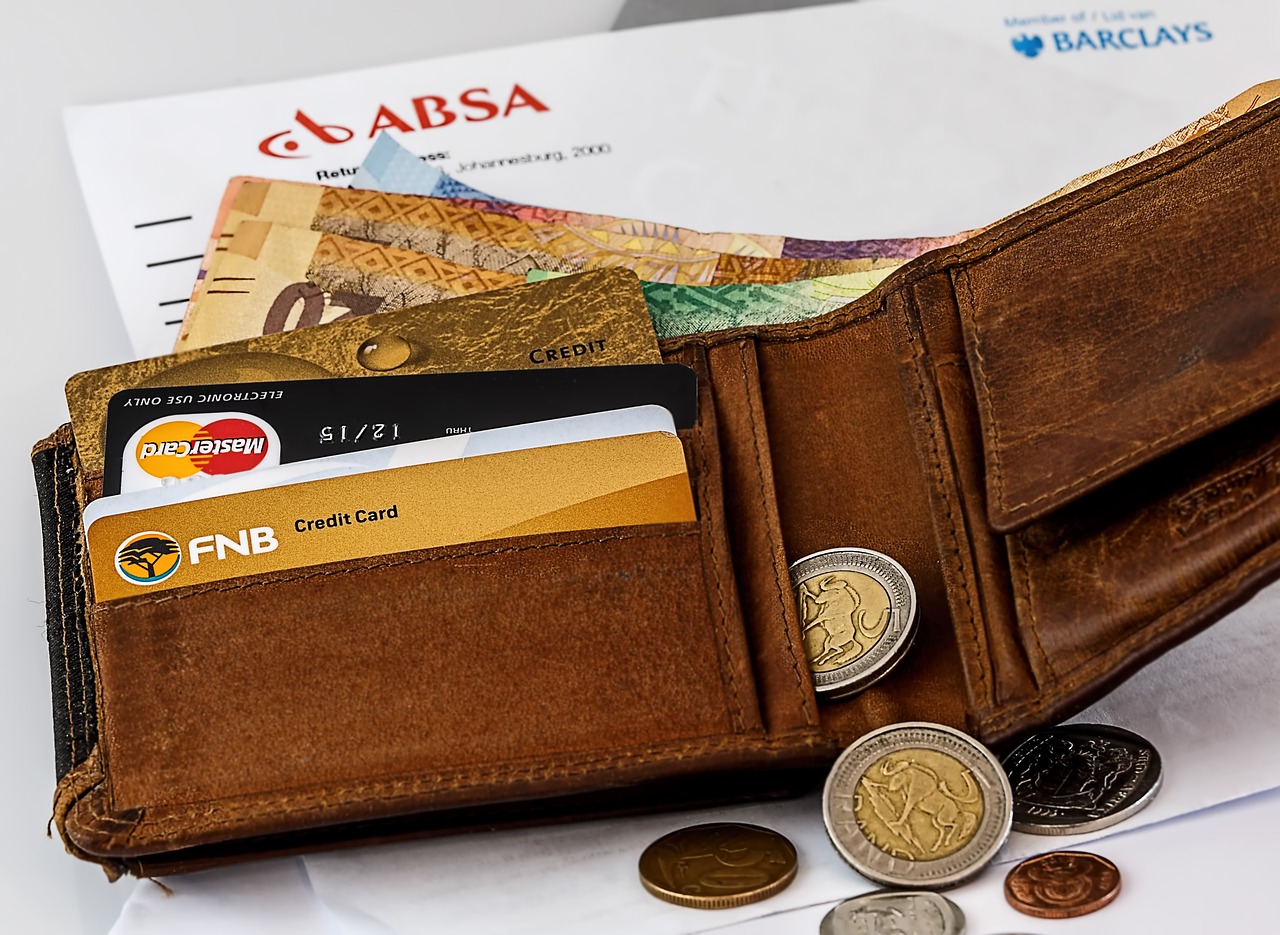
Pros and Cons of Cold Wallets
When it comes to safeguarding your crypto assets, cold wallets stand out as one of the most secure options available. These wallets, which store your digital currencies offline, provide a robust barrier against the myriad of online threats that plague the cryptocurrency space. However, like any financial tool, they come with their own set of advantages and disadvantages.
One of the most significant pros of using cold wallets is their enhanced security. Since they are not connected to the internet, they are less vulnerable to hacking attempts, malware, and phishing scams. This makes them an ideal choice for long-term storage, especially for those who hold substantial amounts of cryptocurrency. If you think of your assets like a treasure chest, a cold wallet is akin to burying that chest deep underground, away from prying eyes.
Another benefit is the peace of mind that comes with knowing your assets are safe. With cold wallets, you have complete control over your private keys, which means you are not reliant on third-party services that could potentially fail or be compromised. This control can be empowering, allowing you to manage your investments without the fear of external factors jeopardizing your holdings.
However, cold wallets are not without their cons. The most notable downside is their lack of convenience. If you need to access your funds quickly, the process of retrieving them from a cold wallet can be cumbersome. You might need to connect the device to a computer, which can be time-consuming, especially in urgent situations. Think of it as trying to dig up that buried treasure when you're in a hurry—it's not the fastest option!
Additionally, cold wallets can be more challenging for beginners to set up and use. There’s a learning curve involved, and if you’re not tech-savvy, you might find the process a bit daunting. Misplacing or damaging a cold wallet can also result in losing access to your funds permanently, which is a risk not to be taken lightly.
To summarize, here’s a quick table outlining the pros and cons of cold wallets:
| Pros | Cons |
|---|---|
| Enhanced security against hacks and theft | Less convenient for quick access |
| Complete control over private keys | Can be complicated for beginners |
| Ideal for long-term storage | Risk of loss if wallet is misplaced or damaged |
In conclusion, while cold wallets provide an excellent solution for securing your cryptocurrency, they come with trade-offs that need to be considered. Understanding these pros and cons will help you make an informed decision that aligns with your financial goals and risk tolerance.
- What is a cold wallet? A cold wallet is a type of cryptocurrency wallet that stores your digital assets offline, providing enhanced security against online threats.
- Are cold wallets completely safe? While cold wallets offer superior security, they are not entirely foolproof. Users must still take precautions to protect their devices and recovery phrases.
- Can I access my funds quickly with a cold wallet? Accessing funds from a cold wallet can be slower compared to hot wallets, as it requires connecting the device to a computer.
- What happens if I lose my cold wallet? If you lose your cold wallet and do not have a backup of your recovery phrase, you may permanently lose access to your funds.
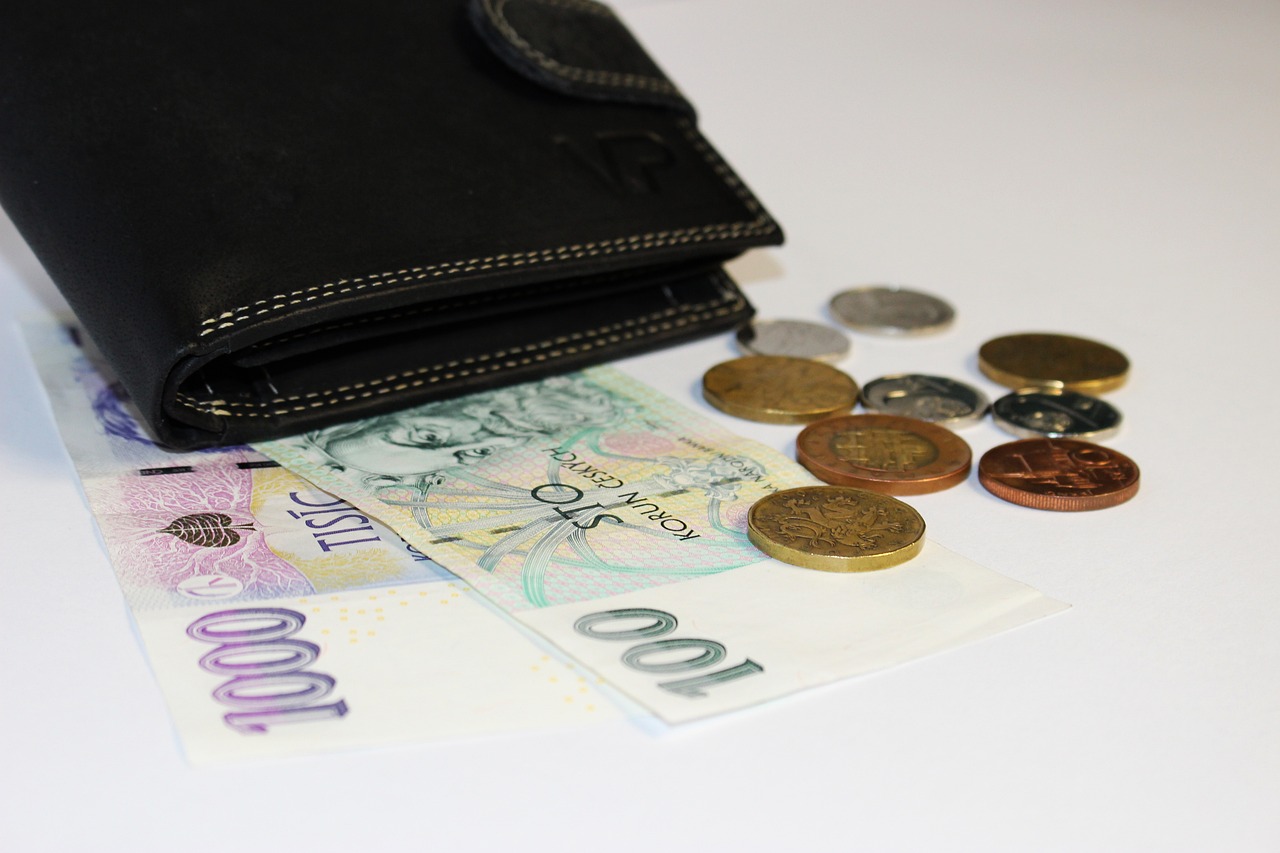
Security Measures for Your Wallet
When it comes to handling your cryptocurrency assets, the security of your wallet is paramount, especially if you're considering taking out a crypto-backed loan. Imagine your wallet as a digital vault; you wouldn’t leave the door wide open, would you? To protect your assets effectively, there are several best practices you should adopt. First and foremost, always enable two-factor authentication (2FA) on your wallet. This adds an extra layer of security by requiring not just your password but also a second form of verification, such as a text message or an authentication app.
Another essential measure is to keep your wallet software up to date. Developers frequently release updates that patch security vulnerabilities. Just like you wouldn’t drive a car with outdated brakes, don’t leave your wallet exposed to potential threats. Additionally, consider using a hardware wallet for storing significant amounts of cryptocurrency. These devices store your private keys offline, making them nearly impervious to online hacks. While they may not be as convenient for everyday transactions, they offer a level of security that hot wallets simply cannot match.
It’s also wise to regularly back up your wallet. Create a backup of your wallet’s private keys and store it in a secure location, like a safe. This way, even if you lose access to your wallet, you can recover your assets. Furthermore, be cautious about phishing scams. Always double-check URLs and never click on suspicious links. Cybercriminals often create fake sites that look legitimate to steal your information. To help you visualize these security measures, here’s a quick summary:
| Security Measure | Description |
|---|---|
| Two-Factor Authentication (2FA) | Adds an extra layer of security by requiring a second form of verification. |
| Software Updates | Regularly update your wallet software to patch security vulnerabilities. |
| Hardware Wallets | Store significant amounts of cryptocurrency offline for enhanced security. |
| Regular Backups | Back up your wallet’s private keys and store them securely. |
| Phishing Awareness | Be cautious of suspicious links and always verify URLs. |
By implementing these security measures, you can significantly reduce the risk of losing your digital assets. Remember, the cryptocurrency landscape can be volatile, and while loans can offer liquidity, they also come with their own set of risks. Always stay informed and vigilant to keep your investments safe.
- What is a crypto-backed loan? A crypto-backed loan allows you to borrow funds using your cryptocurrency as collateral without selling it.
- Are hot wallets safe? While hot wallets are convenient for transactions, they are more susceptible to hacks compared to cold wallets.
- How can I recover my wallet if I lose access? Regularly back up your wallet’s private keys and store them securely to recover your assets if needed.
- What should I do if I suspect a phishing attempt? Immediately change your passwords, enable 2FA, and report the phishing site.

The Loan Application Process
Applying for a crypto-backed loan can seem daunting at first, especially if you're new to the world of cryptocurrency. However, once you break it down into manageable steps, it becomes much clearer. The process typically involves several key stages that you need to navigate to secure your funds efficiently. First and foremost, you’ll need to choose a reputable lender that aligns with your needs. This choice is crucial as different lenders offer varying terms, interest rates, and loan-to-value ratios. Take your time to research and compare options—think of it as shopping for a mortgage, but with a digital twist!
Once you've selected a lender, the next step is to prepare your collateral. In the world of crypto-backed loans, your digital assets serve as collateral, which means you'll need to ensure that your wallet is stocked with the appropriate amount of cryptocurrency. It's like putting up your house as collateral for a traditional loan; you want to ensure you have enough to secure the loan you desire. Depending on the lender, you may be required to deposit a certain percentage of the loan amount in crypto as collateral. This is often referred to as the loan-to-value (LTV) ratio, which can greatly influence your borrowing capacity.
After you have your collateral ready, you will proceed to the documentation phase. Most lenders will require some form of identification and proof of ownership of the cryptocurrency you plan to use as collateral. Common documents include:
- Government-issued ID (e.g., passport or driver's license)
- Proof of residence (e.g., utility bill or bank statement)
- Transaction history of the cryptocurrency in question
Having these documents ready will make the application process smoother and faster. Once you've submitted your application along with the required documentation, the lender will review your information. This is where they assess your creditworthiness and the value of your collateral. Keep in mind that this evaluation can vary significantly from lender to lender, so patience is key during this stage.
After your application has been approved, the next step is the disbursement of funds. Depending on the lender, this can take anywhere from a few hours to several days. It's important to understand that the speed of disbursement can be influenced by factors such as the lender's policies and the current demand for loans. Some platforms offer instant loans, while others might require additional verification steps. Always read the fine print to avoid any surprises!
In summary, the loan application process for crypto-backed loans is relatively straightforward, but it requires careful preparation and attention to detail. By choosing the right lender, preparing your collateral, and having your documentation ready, you can navigate this process with confidence. Just remember, the world of cryptocurrency is fast-paced and ever-evolving, so stay informed and be prepared for anything!
Here are some common questions that might arise during your journey into crypto-backed loans:
- What is the typical interest rate for crypto-backed loans? Interest rates can vary widely depending on the lender and the type of cryptocurrency used as collateral. Generally, they range from 4% to 12%.
- Can I lose my collateral? Yes, if you fail to repay the loan, the lender has the right to seize your collateral to cover the debt.
- Are crypto-backed loans taxable? This can depend on your jurisdiction. It's advisable to consult with a tax professional to understand the implications.
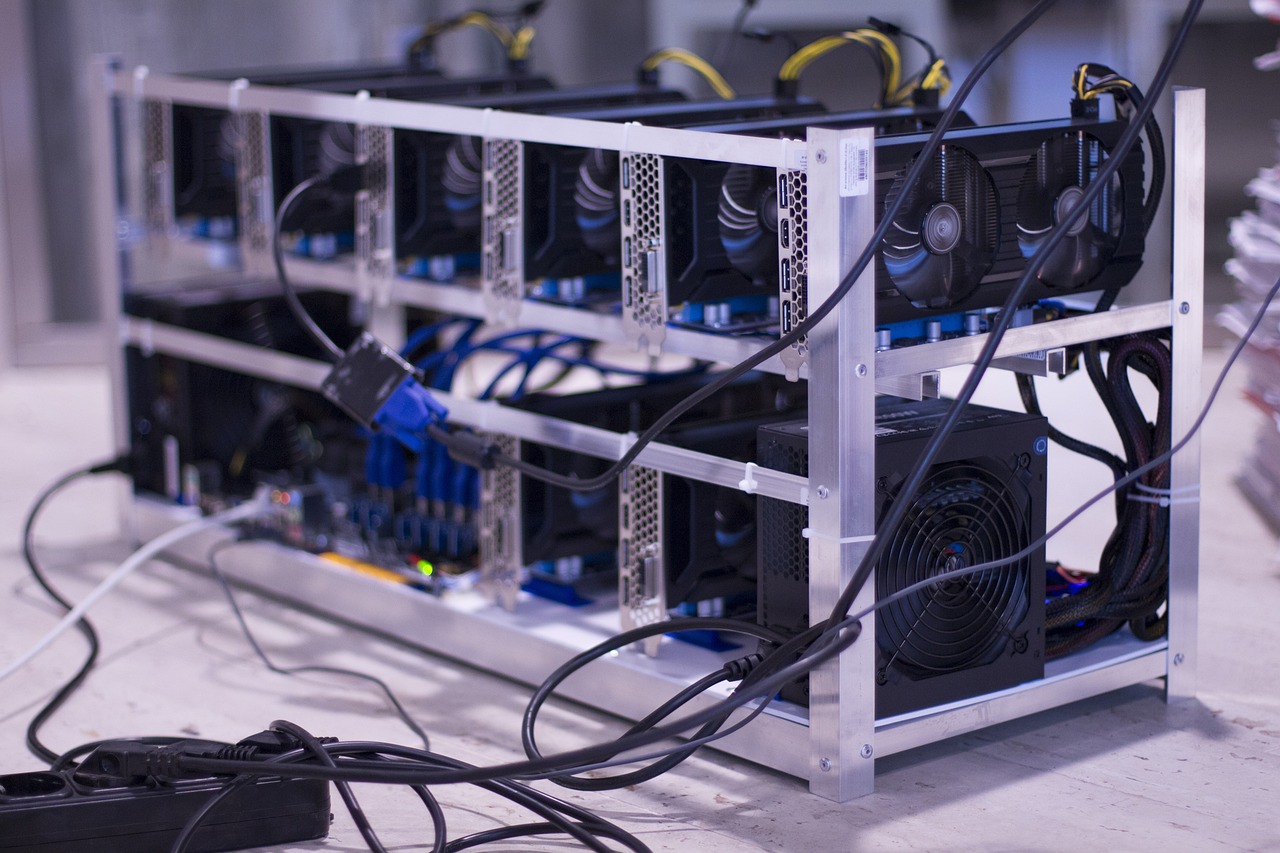
Documentation Requirements
When it comes to securing a crypto-backed loan, having the right documentation is crucial. Lenders want to ensure that they are making a sound investment, and the paperwork you provide plays a significant role in that assessment. Typically, the documentation requirements can vary from one lender to another, but there are some common elements that you should be prepared to present.
First and foremost, you will need to verify your identity. This usually involves providing a government-issued ID, such as a passport or driver's license. Lenders use this information to confirm that you are who you say you are and to comply with regulations aimed at preventing fraud. Additionally, some lenders may require a secondary form of identification, like a utility bill or bank statement, to establish your current address.
Another important aspect of the documentation process is proving ownership of the cryptocurrency you intend to use as collateral. This can be done through a variety of means, including:
- Wallet addresses that show your holdings
- Transaction history from your wallet
- Proof of purchase or acquisition of the cryptocurrency
Moreover, lenders may ask for information about your financial situation. This could include your income, employment status, and any existing debts. The purpose here is to assess your ability to repay the loan, should the need arise. Some lenders might even request a credit report, although this practice varies widely in the crypto lending space.
If you're applying for a larger loan, you might also need to provide additional documentation, such as tax returns or bank statements. This is particularly true for lenders who want to conduct a thorough evaluation of your financial health. So, it's a good idea to gather these documents in advance to streamline the application process.
In summary, while the specific documentation requirements can vary, being prepared with the following can make your application process smoother:
| Document Type | Description |
|---|---|
| Government-issued ID | To verify your identity |
| Proof of Address | Utility bill or bank statement |
| Wallet Addresses | To prove ownership of collateral |
| Financial Information | Income, employment status, debts |
| Tax Returns | For larger loan applications |
By ensuring you have these documents ready, you can significantly increase your chances of a smooth approval process. Remember, lenders are looking for transparency and reliability, so showing that you have your paperwork in order will go a long way in securing that crypto-backed loan.
Q: What types of cryptocurrencies can I use as collateral for a loan?
A: Most lenders accept major cryptocurrencies like Bitcoin, Ethereum, and others. However, it's essential to check with your specific lender for their accepted assets.
Q: How long does it take to get approved for a crypto-backed loan?
A: The approval timeline can vary, but many lenders can provide a decision within a few hours to a couple of days, depending on their processes.
Q: What happens if I can't repay my loan?
A: If you fail to repay your loan, the lender may liquidate your collateral to recover their funds. It's vital to understand the terms before taking out a loan.
Q: Are crypto-backed loans safe?
A: While crypto-backed loans can be a convenient way to access liquidity, they do come with risks. It's crucial to choose a reputable lender and understand all terms involved.
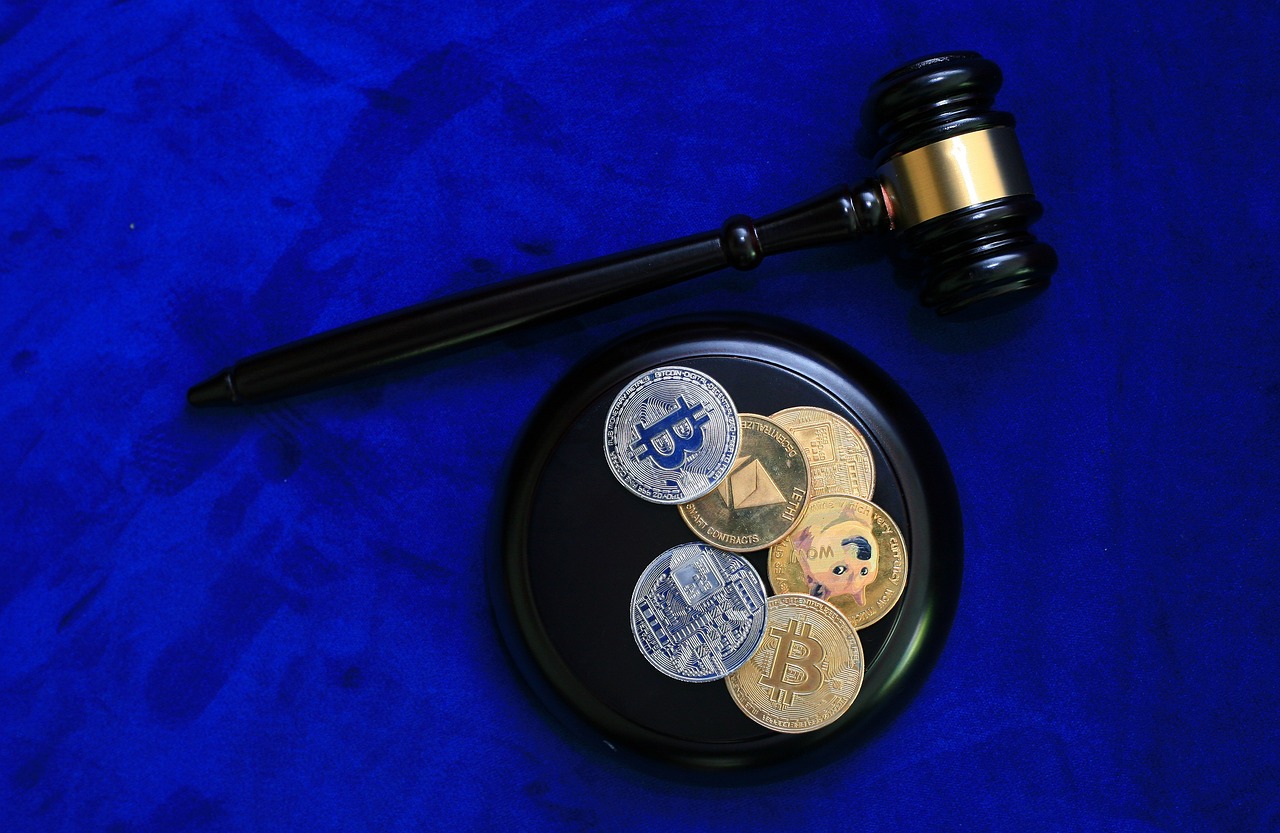
Approval and Disbursement
Once you’ve submitted your application for a crypto-backed loan, the next phase is the process. This is a critical stage that determines whether you will receive the funds you need and how quickly you can access them. Lenders typically follow a structured approach to assess your application, and understanding this process can help you manage your expectations.
Initially, lenders will evaluate your application based on several key factors. They will look at the value of the cryptocurrency you’re offering as collateral, the loan-to-value (LTV) ratio, and your creditworthiness. The LTV ratio is a crucial metric that indicates how much you can borrow against your crypto assets. For instance, if you have $10,000 worth of Bitcoin and the lender offers an LTV of 50%, you could potentially secure a loan of $5,000.
After this assessment, the lender will either approve or deny your loan application. If approved, they will send you a loan agreement that outlines the terms and conditions, including interest rates, repayment schedules, and any fees associated with the loan. It's essential to read this document carefully, as it serves as a legally binding contract. You don’t want any surprises later on!
Once you’ve reviewed and signed the loan agreement, the disbursement of funds will typically follow in one of two ways:
- Direct Deposit: Many lenders will transfer the approved loan amount directly to your bank account, allowing you to access the funds immediately.
- Crypto Transfer: Alternatively, some lenders may disburse the funds in cryptocurrency. This method can be particularly beneficial if you plan to use the funds for further crypto investments.
Generally, the entire approval and disbursement process can take anywhere from a few hours to several days, depending on the lender's policies and the complexity of your application. To expedite the process, it’s advisable to have all required documentation ready and to respond promptly to any requests from the lender.
In summary, understanding the approval and disbursement phase is crucial for anyone looking to secure a crypto-backed loan. By being proactive and prepared, you can navigate this stage smoothly and get the funds you need without unnecessary delays.
If you have more questions about crypto-backed loans, you’re not alone! Here are some common inquiries:
- What happens if I can’t repay the loan? If you default on your loan, the lender may liquidate your collateral to recover their funds. It’s essential to understand the risks involved.
- Can I borrow more than my collateral? Typically, no. Most lenders will only allow you to borrow a percentage of your collateral's value.
- How long does it take to get approved? Approval times can vary widely, but many lenders provide quick responses, often within a few hours.
Frequently Asked Questions
- What are crypto-backed loans?
Crypto-backed loans allow you to use your cryptocurrency as collateral to secure a loan. This means you can access cash without selling your digital assets, giving you liquidity while retaining ownership of your crypto.
- How do I choose the right wallet for my crypto assets?
Choosing the right wallet depends on your needs. If you want quick access for transactions, a hot wallet might be suitable. However, if security is your priority, consider a cold wallet. Always weigh the pros and cons based on how you plan to use your crypto.
- What are the risks of using hot wallets?
Hot wallets, while convenient, are more susceptible to hacks and security breaches due to their internet connectivity. It's essential to implement strong security measures, like two-factor authentication, to mitigate these risks.
- What documents do I need to apply for a crypto-backed loan?
Typically, you'll need identification, proof of income, and details about the cryptocurrency you plan to use as collateral. Each lender may have specific requirements, so it's best to check with them beforehand.
- How long does it take to get approved for a crypto-backed loan?
The approval process can vary by lender, but it usually takes anywhere from a few hours to a few days. Once approved, funds can be disbursed quickly, allowing you to access your money when you need it.
- Can I lose my cryptocurrency if I default on the loan?
Yes, if you default on a crypto-backed loan, the lender has the right to seize your collateral. It's crucial to understand the terms of your loan and ensure you can meet repayment obligations before proceeding.
- Are there any fees associated with crypto-backed loans?
Yes, lenders may charge various fees, including origination fees, interest rates, and late payment penalties. Always read the fine print and ask about any potential costs before signing up for a loan.
- What security measures should I take for my crypto wallet?
To secure your wallet, use strong, unique passwords, enable two-factor authentication, and regularly update your software. Additionally, consider storing large amounts of crypto in a cold wallet for added security.



















